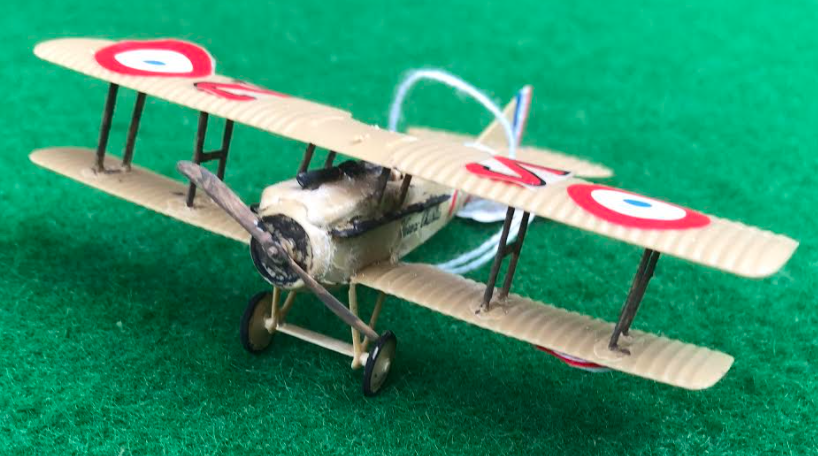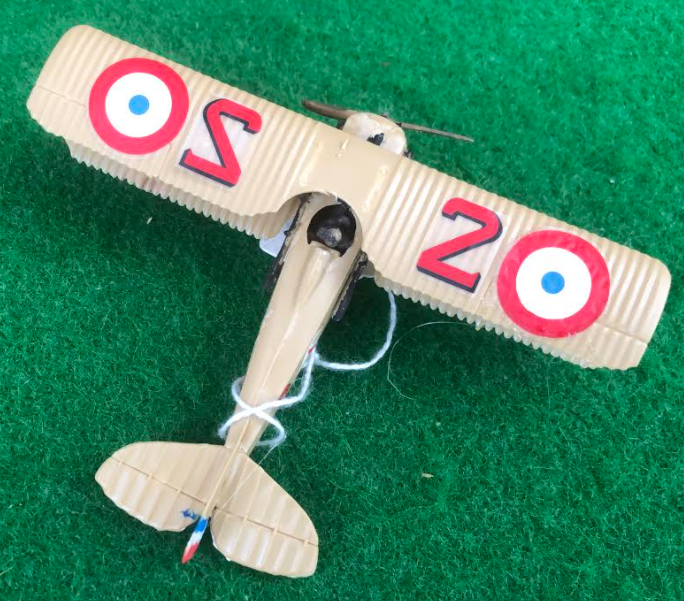SPAD V11
The SPAD S.VII was the first of a series of highly successful biplane fighter aircraft produced by Société Pour L’Aviation et ses Dérivés (SPAD) during the First World War. The S.VII was renowned as a sturdy and rugged aircraft with good climbing and diving characteristics. It was also a stable gun platform, although pilots used to the more manoeuvrable Nieuport fighters found it heavy on the controls. It was flown by a number of the famous aces, such as France’s Georges Guynemer, Italy’s Francesco Baracca and Australia’s Alexander Pentland.
The French Aviation Militaire had been sufficiently impressed by the performance of the earlier SPAD V prototype to order a batch of 268 aircraft on 10 May 1916. However, teething problems soon appeared and it would be several months before the SPAD VII would serve in significant numbers on the front, the last aircraft of the initial batch only being delivered in February 1917.
The first aircraft delivered to a frontline unit was S.112 flown by Lt Sauvage of N.65, followed by S.113, assigned to Georges Guynemer of N.3. Guynemer was already credited with 15 victories at the time, but it was Armand Pinsard of N.26 who was the first to score an aerial victory on 26 August.
Allied air services were also equipped with the new fighter –
The Royal Flying Corps was the first foreign service to receive the SPAD VII, although only two squadrons (19 and 23 Squadrons) used it on the Western Front.
Russia received a batch of 43 in spring 1917 which were supplemented by approximately 100 SPAD VII manufactured by the Dux factory under license.
Belgium equipped the 5e Escadrille (later renamed 10e Escadrille) with the S.VII. Edmond Thieffry was probably the most famous Belgian pilot to fly the type.
Italy began using the SPAD VII in March 1917 where nine Squadriglia were equipped with it.
When the United States entered the war in 1917, an order for 189 SPAD VIIs was placed for the United States Army Air Service of the American Expeditionary Force. The first aircraft were delivered in December 1917. Most were used as advanced trainers to prepare the American pilots for the SPAD XIII.


